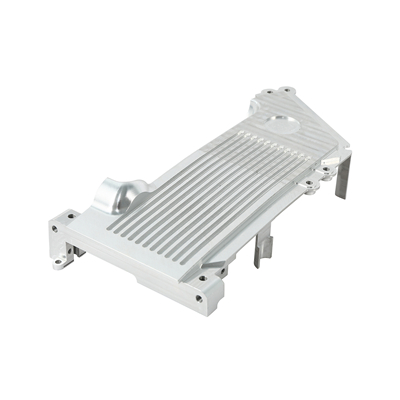About CNC Brass Machining
Release time:15-08-2023

Introduction to CNC Brass Machining
CNC (Computer Numerical Control) brass machining is a cutting-edge manufacturing process that employs computer-aided design (CAD) and computer-aided manufacturing (CAM) software to control the movements of machinery and tools in crafting brass components. This method offers unprecedented precision, repeatability, and efficiency, making it a preferred choice for industries requiring intricate metal parts.
The Evolution of CNC Technology
The origins of CNC machining trace back to the mid-20th century, with developments in early computer programming and automation. As technology advanced, so did CNC machining, gradually integrating more sophisticated software and hardware components. Today, CNC brass machining stands as a testament to the remarkable progress made in precision metal fabrication.
Advantages of CNC Brass Machining
CNC brass machining offers an array of advantages, including:
Precision: The accuracy achieved in CNC machining is unparalleled, making it ideal for applications demanding tight tolerances.
Efficiency: Automated processes minimize human error and optimize production speed, leading to higher productivity.
Complex Geometries: CNC machining can create intricate shapes and features that would be challenging through traditional methods.
Material Versatility: Brass machining encompasses a wide range of materials, enabling the creation of diverse components.
Cost-Effectiveness: While initial setup costs may be higher, CNC machining reduces wastage and enhances long-term cost-efficiency.
Materials Suitable for CNC Brass Machining
CNC brass machining is particularly well-suited for materials such as:
Brass Alloys (including CZ121, CZ131, and CZ360)
Stainless Steel
Aluminum Alloys
Plastics
CNC Machining Process: Step by Step
The CNC brass machining process involves several key steps:
Design: Engineers create a detailed 3D model of the component using CAD software.
Programming: CAM software generates toolpaths and instructions for the CNC machine.
Setup: The CNC machine is prepared, including loading the raw brass material and attaching the necessary tools.
Machining: The CNC machine precisely cuts and shapes the brass according to the programmed instructions.
Finishing: Additional processes such as polishing, deburring, and surface treatment enhance the final product.
Types of CNC Brass Machining Operations
CNC brass machining encompasses various operations, including:
Turning: Rotating the workpiece while a cutting tool shapes it.
Milling: Removing material using rotary cutters to achieve complex shapes.
Drilling: Creating holes with precision and accuracy.
Boring: Enlarging existing holes and achieving high dimensional accuracy.
Designing for CNC Brass Machining
To fully leverage CNC brass machining capabilities, designers should consider:
Tolerances: Specifying precise tolerances to ensure component accuracy.
Internal Features: Designing for ease of machining, especially for internal geometries.
Avoiding Complexity: Minimizing intricate details that could compromise the machining process.
Applications of CNC Brass Machining
CNC brass machining finds applications in diverse industries:
Aerospace: Crafting precise components for aircraft and spacecraft.
Electronics: Manufacturing connectors, terminals, and housing for electronic devices.
Medical: Producing intricate medical instruments and implants.
Automotive: Creating specialized parts for engines, transmissions, and braking systems.
Quality Control and Inspection
Stringent quality control measures are essential to ensure the integrity of CNC-machined brass components. Advanced metrology tools, such as coordinate measuring machines (CMMs), are employed to verify dimensional accuracy and quality.
Sustainability and CNC Brass Machining
CNC brass machining contributes to sustainability through reduced material wastage and energy-efficient processes. The technology's precision minimizes errors, thereby lowering the need for rework and additional resources.
Future Trends in CNC Brass Machining
The future of CNC brass machining holds exciting possibilities:
Miniaturization: Pushing the boundaries of precision for smaller, more intricate components.
Advanced Alloys: Exploring new brass alloys for enhanced mechanical properties.
Integration of AI: Utilizing artificial intelligence to optimize machining processes and reduce cycle times.
Where to find CNC Brass Machining?
Boyang Hardware and Plastic Products Co.,Ltd has about 20 years of proven precision in manufacturing,covers 3000 square meters.We have 30sets of CNC MACHINING CENTER,3D inspection instrument, Creative engineering team and Strict QC department.We will be your best partner.









